Sandakphu – Not far from the renowned hills of Darjeeling, in the sublime northern mountains of West-Bengal, precariously close and sometimes interspersing the borders with Nepal, exists a pristine region of eastern Himalayas.
Harmoniously spread majorly in West Bengal, Sikkim and partly far-western Nepal, the Singalila Ridge, stretching north to south, separates the ranges of Bengal from the other east-Himalayan ranges west henceforth. Enveloping this rolling mountainous ridge with untouched perennial greenery and sheltering some immaculate wildlife within, prevails the Singalila National Park. The pinnacle of this forested ridge is Sandakphu.
Let's quickly dive into the details:
About
Sandakphu, literally means ‘Peak of the poison plants’. The nomenclature can be accredited to the bloom of some poisonous genus of plants nearby. One is the ‘Aconitus’, a perennial shrub, the roots of which have been used as medicine since time immemorial while its bright purplish-blue flowers and leaves can be lethally toxic if consumed imprudently. Another is the ‘Himalayan Cobra Lilies’ which also abound the area.
Sandakphu is a prominent name in the trekker’s world as a light-moderate trek. It is the summit of the Singalila Ridge and the National Park, at an elevation of 11,930 ft. Which also makes it the highest point in the state of West Bengal.s so special?
What is so special?
What makes this small hamlet on top of a ridge a place not to miss in the eastern Himalayas is the fact that from here on a clear morning, especially at the wee hours when dawn breaks, 4 out of the 5 highest peaks of the world can be seen as part of an unworldly 180° panorama.
Apart from all five lofts of the Sleeping Buddha (Mt. Kanchenjunga, 28,169 feet, third highest), Mt. Everest (29,029 feet, highest), Lhotse (27,940 feet, fourth highest) and Makalu (27,838 feet, fifth highest) are visible sparkling spectacularly in the golden hue at sunrise.
Incredibly the view stretching from west to east, consists peaks from Nepal, Tibet, Sikkim, Bhutan and as far as Arunachal. It is a humbling experience to witness the sunrise from here when the dazzle of bright red-pink-golden hues screech apart the darkness reflecting on the gigantic snowy mountains over waving clouds engulfing the valley below.
Sunsets are equally enchanting but generally, the views in the morning are clearer. There are separate sunrise and sunset points in Sandakphu for that matter.
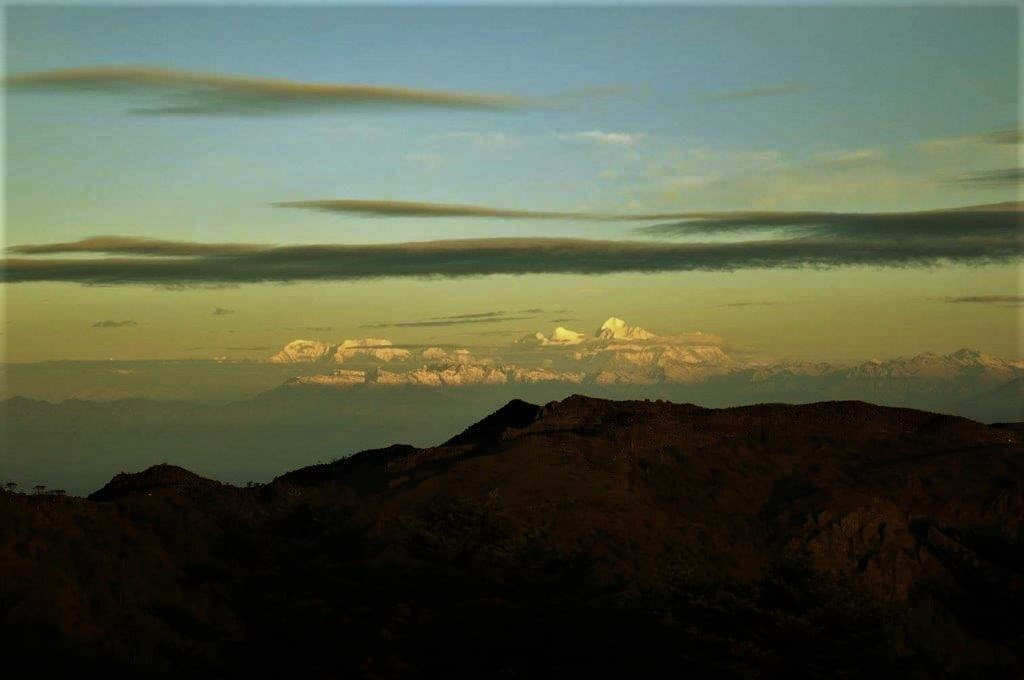
Is trekking the only option to get in Sandakphu?
No. It is motorable too. But there is a catch. It is not any smooth tarmac that anybody can drive on. The gravel-boulder track is tricky and only doable on a sturdy 4×4 SUV. Full of loose boulders, precarious bends and steep accents, it would also require exceptional driving skills to make it to Sandakphu without any serious damage to the vehicle.
Old Land Rovers from the colonial days used to ply between Manebhanjan and Sandakphu, even till Phalut until quite recently, taking tourists reluctant on trekking to the top but have been recently (from 30th Jan, 2018) banned by the local authorities on the pretext of the vehicles being non-compliant to present norms of safety and environment.
The West Bengal government is subsidizing the owners to buy Boleros instead to phase out the land rovers. All said, as I could gather from some locals, some land rovers are still plying in the route.
In summer this year, JLR celebrated its 70th anniversary in the region with a motorcade of all its models across the era. From the very first Series-I to the latest Discovery. It speaks volumes about how iconic this route has been with Land Rovers and its heritage.
Earlier the entire 30+ kilometers from Chitre (2 KM up from Manebhanjan) to Sandakphu and onwards another 21 kilometers to Phalut (second highest peak of the Singalila Ridge) was a boulder-gravel track.
Presently the route has been paved partly with tarmac and partly with concrete for 20 kilometers from Manebhanjan till a place called Gairibas. The last 12 kilometers to Sandakphu and the 21 kilometers from Sandakphu to Phalut remains the same.
Biking is also an option though it is an extremely difficult terrain to ride on. Till Gairibas, it should not be a problem anymore but the rest of the route will aptly test not only the efficiency of the bike, but also the rider’s skills and maneuverability.
UPDATE: No bikes and no private vehicles are being presently allowed to ply in the Singalila National Park area.
How difficult exactly is the Sandakphu trek?
Well, for an avid trekker it would be easy to moderate. For absolute newbies too, it is quite manageable. Firstly, trekking has nothing to do with mountaineering or rock-climbing. It is just another word for walking or hiking in the mountains. To put it more ordinarily, if you are relatively fit and can walk 8-10 kilometers in the plains with 2-3 breaks, you can make it.
Of course, the knees and calf muscles will hurt a bit, or one can take an occasional tumble, or twist an ankle, but then, that’s part of the adventure. Countless beginners like myself have done it and hence been forever bitten by the bug of trekking more.
Infact, I feel Sandakphu can be an ideal trek for beginners for quite a few reasons:
- The trail is well marked. The upward trek from Manebhanjan to Sandakphu almost entirely follows the boulder track used by the Land Rovers.There are enticing short cuts here and there in between but they are steeper hence tougher.
- There are shops and settlements for refreshments almost every 2-3 KMs which helps with the tired legs to put down the backpack and sip a hot chai or a bowl of maggi.
- Taking a guide is mandatory. This has been done to boost employment for the locals. The guides are trained for dealing with any kind of emergency that may arise during the hike. Porters are available too.
- The trek is not too easy neither too difficult, so it gives the beginners a real taste of trekking. The entire circuit takes 4-5 days to complete, which again is perfect to get the actual drift.
- The places for overnight stays enroute are all permanent settlements with most of them having comfortable rooms and facilities. A good night’s sleep after a tiring day’s trek is invaluable.
- In the rare case of an emergency if somebody is unable to walk further, the land rovers can be called for rescue which is a unique advantage.
- Almost no trekking equipment or gear is required. Just a good pair of comfortable shoes and you are good to go. The guides will cut you a walking stick from the woods which help immensely.
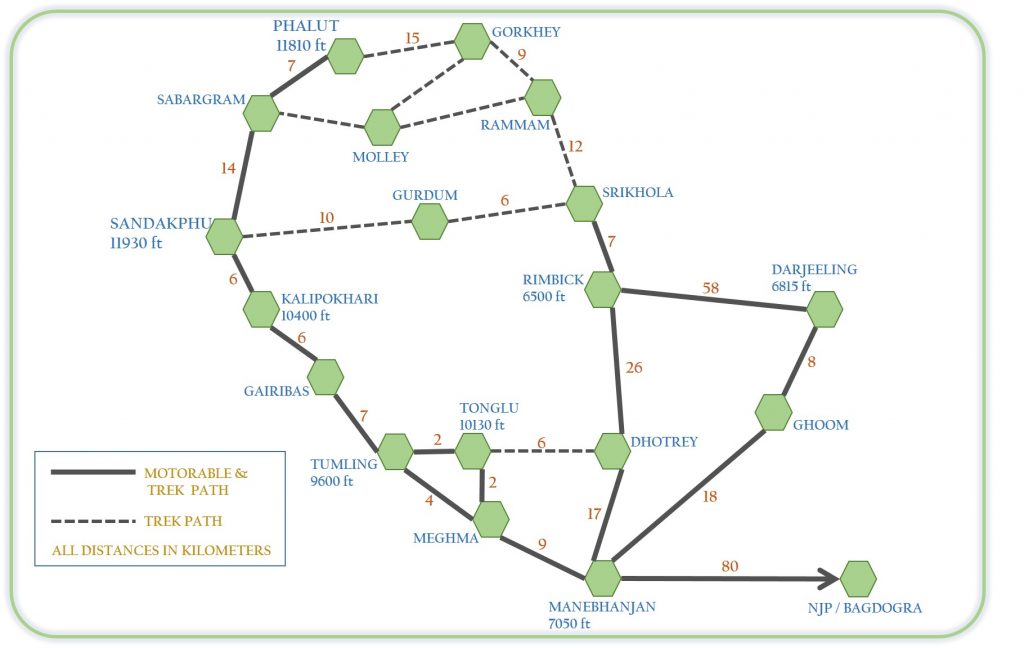
The Route Upward
There are some alternate trek routes (mentioned later) to Sandakphu as well apart from the most opted one, which is from Manebhanjan. The trek upward is of 32 kilometers from Manebhanjan to Sandakphu, which is covered commonly over 3 days.
Experienced trekkers manage it in a day less. There happens to be a yearly race where trekking enthusiasts run to the top, like a Marathon. I have heard they cover the entire route in about 7-10 hours.
Manebhanjan
At an elevation of 7050 feet, Manebhanjan is a non-descript little roadside hill-town significant only perhaps as the gateway to the Singalila or more precisely Sandakphu. If you get out of NJP railway station in cargos, trekking shoes, and a rucksack, the over-enthusiastic drivers would ask you enquiringly, “Manebhanjan?”
The conventional trek starts from here. This is the place where one has to get an entry permit for the Singalila National Park. Also, the ‘Highlander Guides and Porters Welfare Association’ is located bang on the bazaar, from where the mandatory guide and porters require to be hired.
The Land Rover stand was just at the end of the market with a tariff board displayed for different places, the furthest being Phalut and the nearest being Tonglu / Tumling. The shops in the market sell and lend trekking gears like rain ponchos, boots, walking poles etc.
Since this is the last so-called bazaar, it is advisable to stock up on any last-minute necessities. Some guest houses and lodges are also present where trekkers stay for the first night before embarking upon the trek early next morning. The straight road goes up to Sandakphu and terminates in Phalut while another cuts right towards Dhotrey and subsequently Rimbick.
Dhotrey is an alternative starting point for the Sandakphu trek, which has gained popularity over the years owing to the fact that it cuts the trek down by 5 KMs. Also, the trail from here till Tonglu is through forests and greenery, unlike the one from Manebhanjan which is basically a cemented vehicular road.
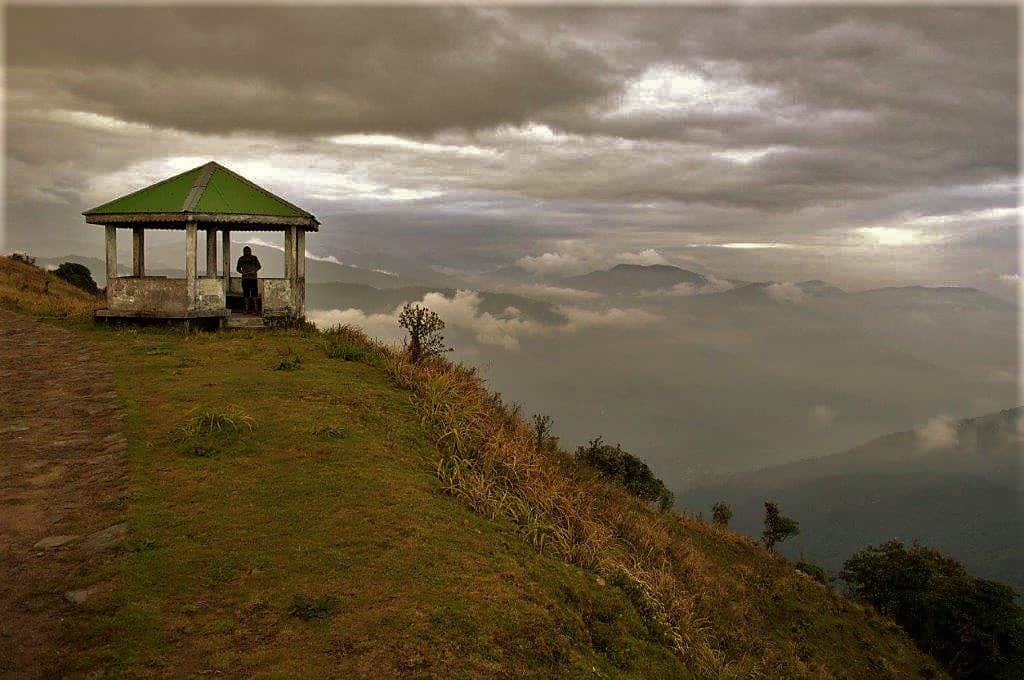
Tonglu
At slightly more than 10k feet, Tonglu takes 6-7 hours to reach on foot. Now that that the road is concreted, should not even take an hour by a vehicle for the 11 KMs from Mane. The trail at its beginning is quite steep till the quaint little settlement of Chitre, almost as if to make someone coming for his first major trek, mull over the appropriateness of his decision right away.
Thankfully the accent eases up after Chitre. 5 KMs further up from here lies Meghma on the borders of India and Nepal. Incredibly, from here onwards, you would be practically hopping across the borders many times over. There are no restrictions or any requirement for paperwork for this route. Meghma, as the name suggests, is often shrouded in clouds.
The trail bifurcates from here. The left goes from within Nepal to Tumling, while the one right remains domestic to reach the mesmerizing Tonglu, before eventually meeting the other trail at Tumling.
Tonglu, actually is one of the high peaks of the Singalila Ridge,noted for its own sunrise spectacle over the Kanchenjunga. The hill top is a small piece of flat land where the GTA (Gorkhaland Territorial Administration, erstwhile DGHC-Darjeeling Gorkha Hill Council), which has the administrative authority of the area, has set up a charming Trekker’s Hut, as also at other places in the trail.
A DM’s bungalow and few other private lodges are all Tonglu is about. The views at any time from here are breathtaking. The clouds caressing the endless green mountain lofts as far as sight can reach. The mountain sky never has a dull moment perhaps. An aesthetically built viewing hut stands right at the edge, which adds charm to the setting. On a clear day, Darjeeling and the mighty Teesta meandering over the plains of north Bengal construct the scape of view from Tonglu.
It gets quite windy and chilly at nights in Tonglu, even in the peak summer months. Tonglu is a preferred halt for the first night for trekkers

Tumling
Geographically situated in the Ilam district of Nepal, Tumling (9600 feet) is about a couple of kilometers downhill from Tonglu. It has better private stay options than Tonglu, which is slowly making this pleasant little hamlet a destination in itself, for even those who would not go till Sandakphu.
Now that the road has been paved, it won’t be surprising to see places like Tonglu and Tumling get even more popular with the mainstream leisure tourists.
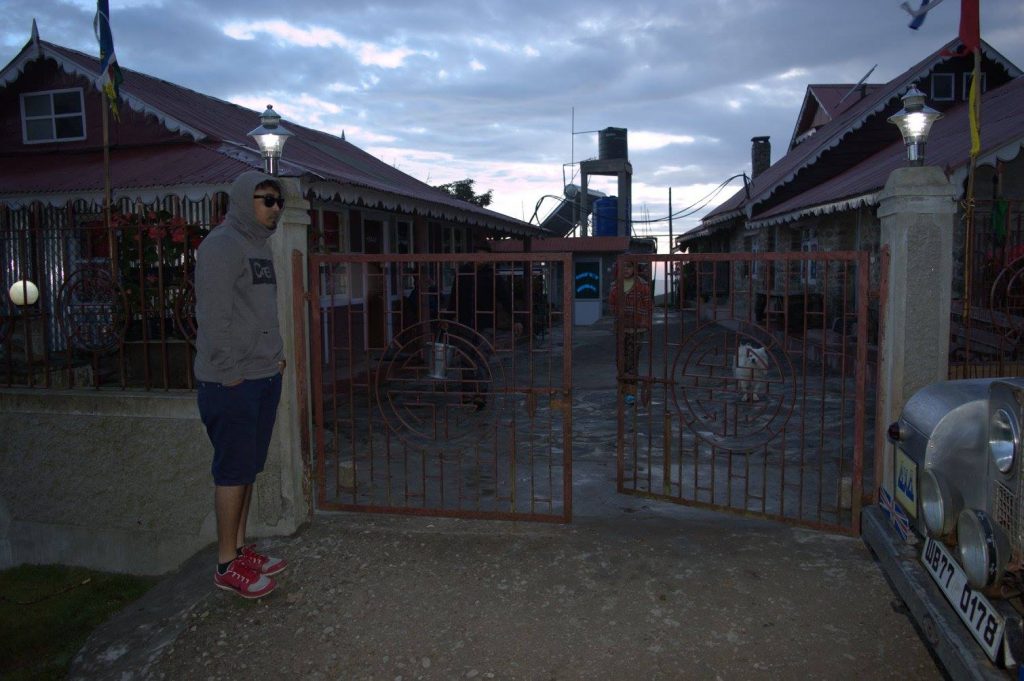
A small flat elevated piece of land almost bang in the middle of the little village of a handful brightly colored, sloping tin-roofed houses of the ethnic ‘Gurungs’ of Nepal, serves as a viewpoint with a few park benches to sit and gaze at the heartwarming view of primarily the Sleeping Buddha.
The Sandakphu peak can also be visible depending on the conditions. Few provision stores, most of them extended out portions of homes, sell tea, Maggie, packaged water bottles etc. Tumling was the last place on the trail to have got conventional electricity, however, even the other places supply solar power points to charge phones and devices at an additional cost.

The trail continues gradually downhill from Tumling all the way till Gairibas. A kilometer from here, an arched gate which reads “Singalila National Park” welcomes you.
The national park officially starts from here. The entry permits can be obtained from here too if you have missed acquiring it from Mane. Notably, for Tonglu or for that matter any place till Tumling, no permits or guides are required. It is only upon entering the Singalila National Park, that they become necessary.
For non-trekkers, Tumling can be the place to spend the first night if you start before noon from NJP / Bagdogra.
A Snippet on Singalila National Park
The national park boasts of rare flora and fauna. Eastern Himalayan sub-alpine-sub-tropical pines and conifers constitute the basic biome of the region. The entire trail passes through ageless Oak, Pine, Silver Fir, Birch, Magnolia and several variants of Bamboo trees, besides more than 500 kinds of orchids, several variants of Primulas, Geranium, and Rhododendrons that add hue in the two blooming seasons of the region.
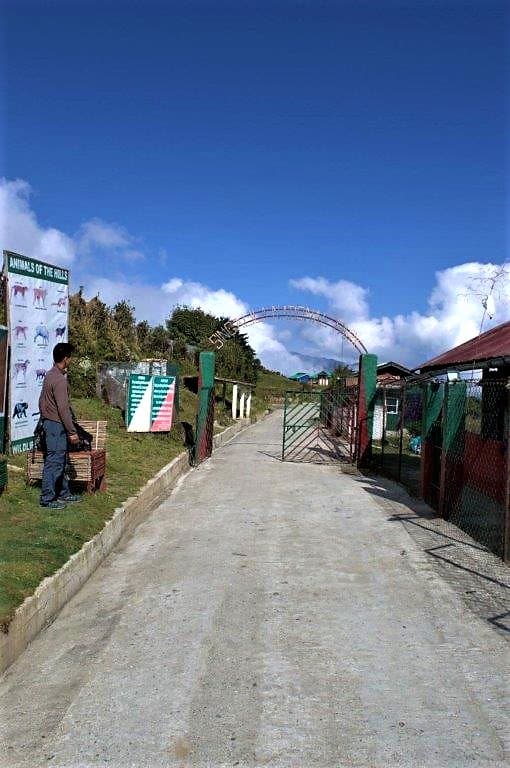
The fauna is equally diverse with endangered species like the Red Panda, Shrouded Leopard, Himalayan Black Bear, Himalayan Barking Deer, and the Himalayan Newt apart from more than 120 recorded species of birds which makes it, besides everything it already is, a birder’s heaven too.
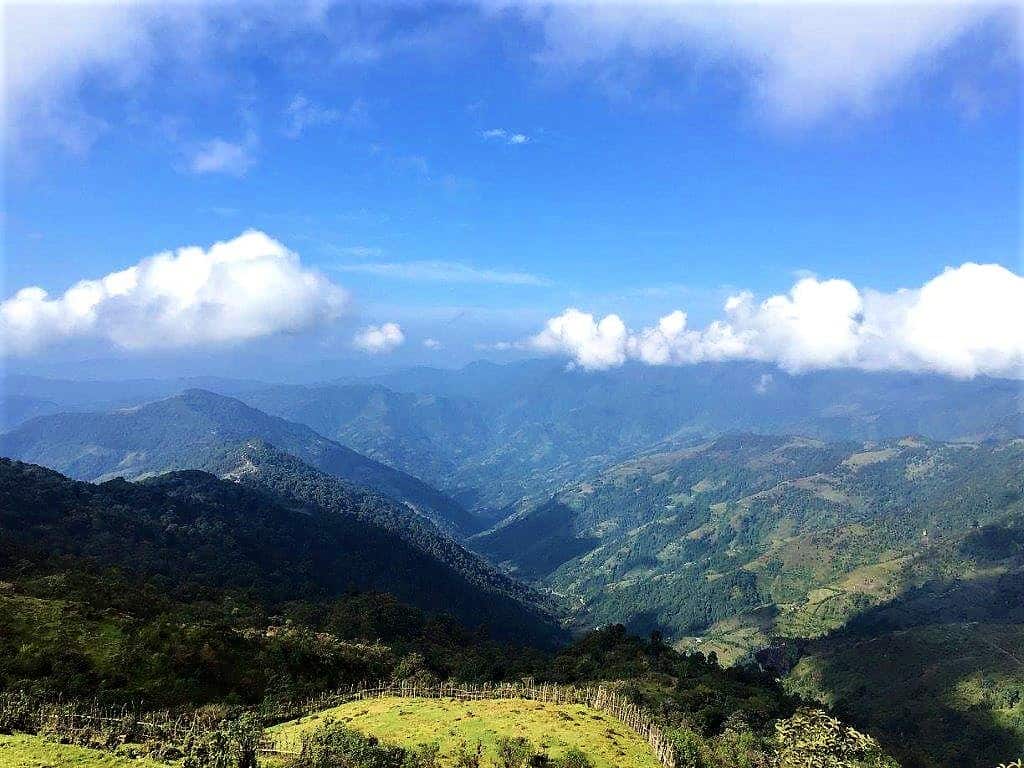
Kalipokhari a.k.a Kalpokhri
13 KMs from Tumling and 15 KMs from Tonglu, Kalipokhari at 10,400 feet is a day’s trek (7-8 Hours). As the name indicates, the greatest feature of the place is a not too large lake containing black water. The locals say the water never freezes too.
Buddhist prayer flags run crisscrossing over the lake, which appears as the first prominent landmark of the place, with the tin-roofed houses a little further. Some concrete sitting benches adorn the shores just by the side of the trail.
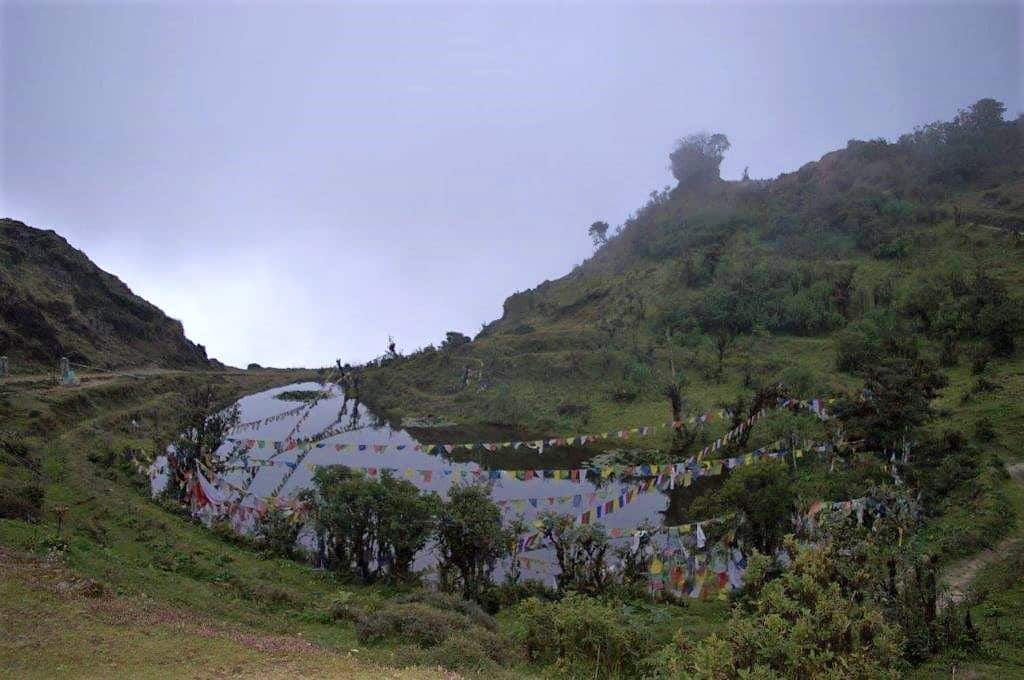
As one enters the Singalila National Park shortly after Tumling, the trail trifurcates. One going from the Nepalese side through another small hamlet, Jhaubari. One going gradually downhill to Gairibas from Indian Territory. This one has been concretized and taken by vehicles.
Another slender trail, mostly through forested paths also exists, which is a portion of the trek-only circuit made by the GTA in the early 2000s. All the three eventually meet at Gairibas (8700 feet), which is gaining popularity since the road has been constructed, for its enchanting scenic location and a splendid trekker’s hut run and maintained by GTA on a delightful flat meadow. Greenery all around and a submerging tranquil silence amidst unbridled nature, Gairibas, is even more. Some private accommodations have also come up in the recent past.
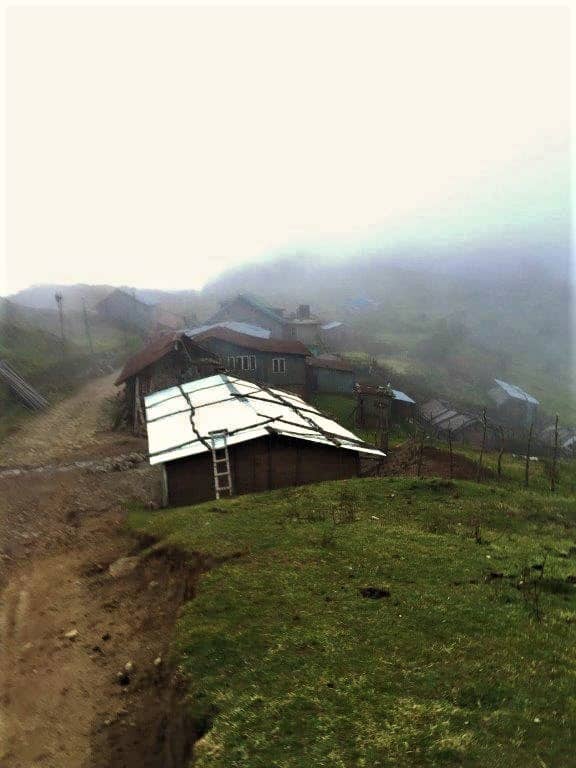
The real accent, however, begins from Gairibas. The 12 kilometers till Sandakphu will test even the seasoned trekkers at moments. Kalipokhri is located almost equidistant from both Gairibas and Sandakphu. Which makes it the most opted halt for the second night for trekkers.
There is no trekker’s hut here, however, the private lodges do the job offering similar services. The accommodation at Kalipokhari is perhaps the most basic one will find on the route beside perhaps Phalut for that matter. If the day is clear, one can spot the famed Sherpa Chalet of Sandakphu from Kalipokhri.
For non-trekkers, Kalipokhari is just a stopover. They would ideally drive on till Sandakphu from Tumling, or even Manebhanjan.
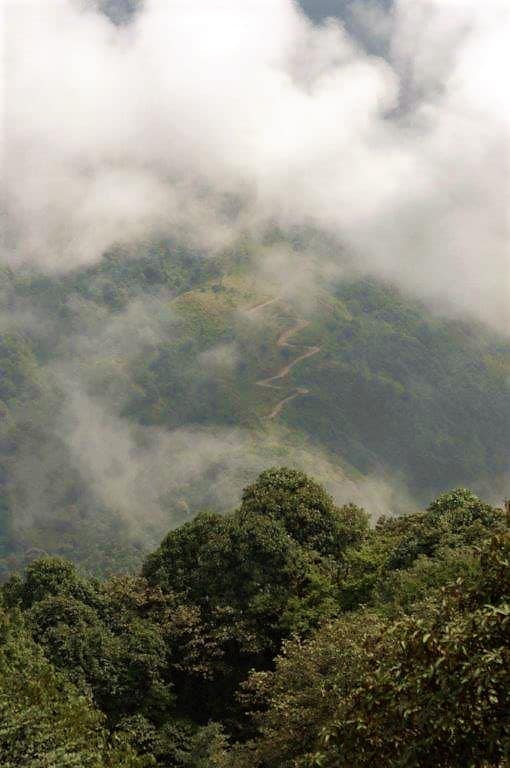
Sandakphu: The Final Accent
The trek from Kalipokhari to Sandakphu may only be 6 KMs, but undisputedly the most excruciating of the entire stretch. Trekking over the altitude of 10k feet is never easy. The air gets thinner which exhausts the hiker’s stamina easily, making it all the more difficult.
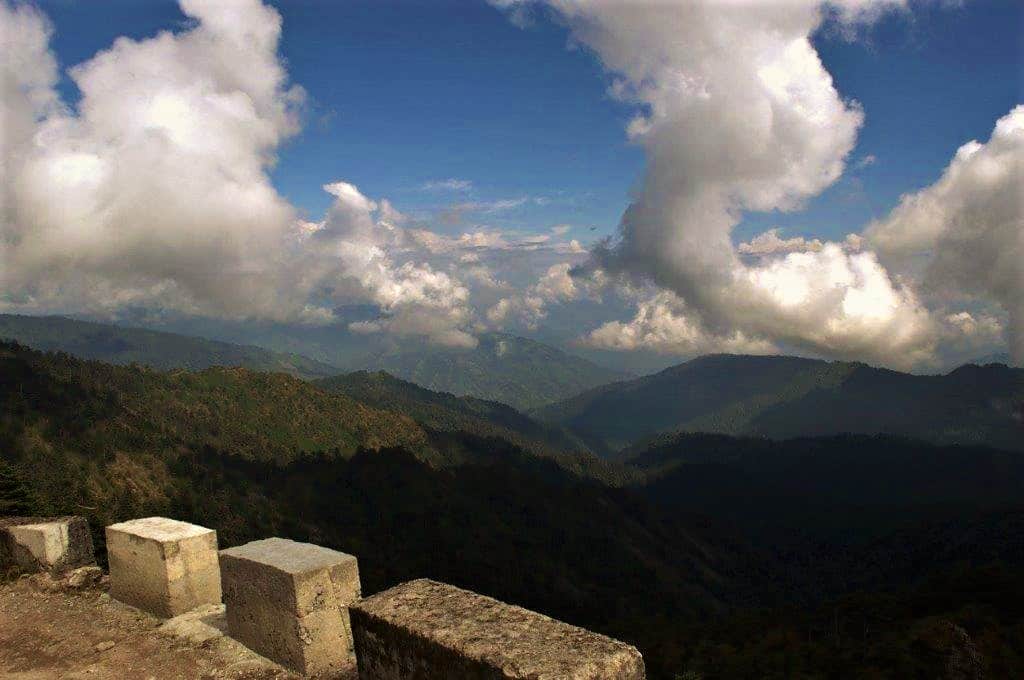
Out of Kalipokhari, the trail initially accents gradually for the first 2 KMs till Bikheybhanjan, which is another tiny settlement of few huts and an SSB check post. One can stop and rest here briefly over a cup of tea before proceeding towards the steepest 4 KMs till Sandakphu.
The gradient of this final section, as if metaphorically illustrates the saying, ‘No great thing in life come easy’. It is advisable to take small steps and frequent breaks. The last 4 KMs could easily take more than 2 hours to conquer. On the last bend before Sandakphu, a milestone reads, ‘SANDAKPHU 0 KM, PHALUT 21 KM’, when it is still another 400+ meters of a steep uphill walk from this point to the top.
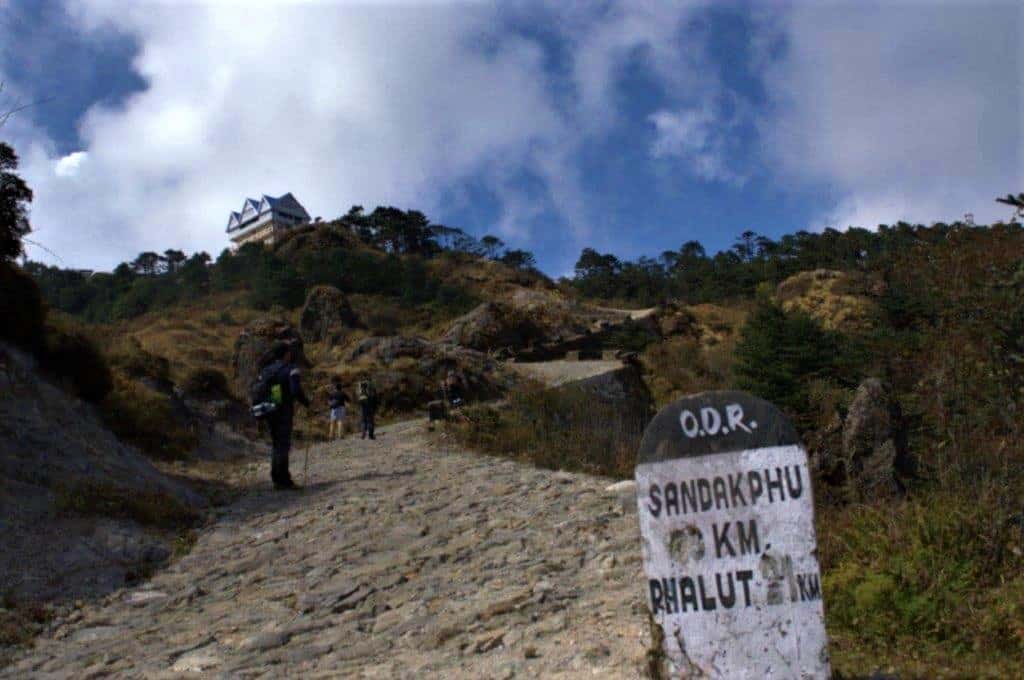
All the pain, all the exhaustion, will wither away once you reach Sandakphu, all the more if the view is clear by the time you reach (for which starting early from Kalipokhari is recommended). The graceful Sleeping Buddha will welcome you with a smile.
The brightly hued hotel Sherpa Chalet is huge and located right on the summit, making it visible even from the start of the day’s trek from Kalipokhari. There are a few other private properties beside it and some others including the GTA trekker’s hut slightly downhill.
Beside the invigorating view, Sandakphu is magnificent in itself, dotted with the tall standing evergreen pine conifers and rustic gravel paths. The breeze so pure, the skies bright blue, sprinkled pleasingly with abstract forms of free-flying radiant white clouds that can be gazed at timelessly. Just grab a cup of hot chai and sit away the unhurried moments in the paradise called Sandakphu.
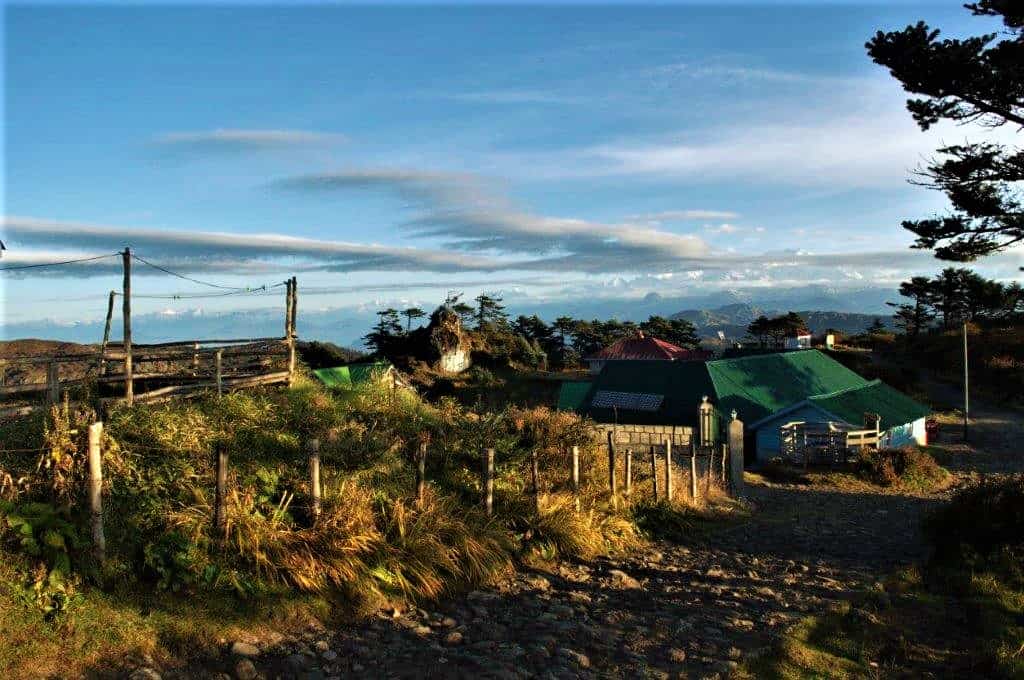
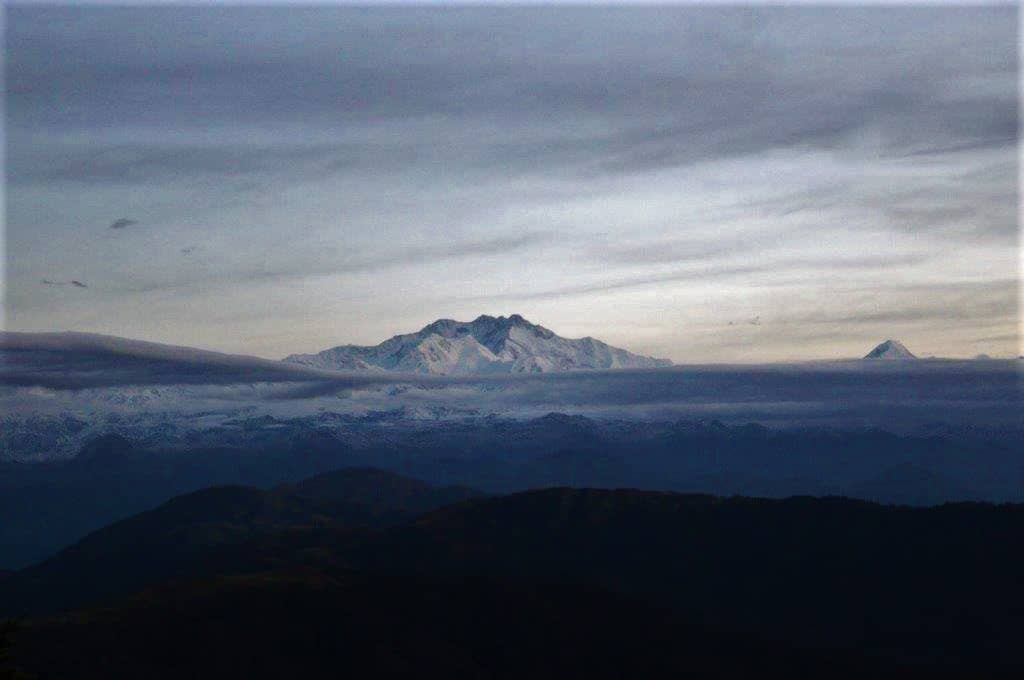
The Panoramic Extravaganza
Set the alarms right depending on the season and time of sunrise. The sunrise view point is a 100 meters walk from Sherpa Chalet. As the darkness begins to give in, to welcome another new day, the mighty peaks start to glimmer in the first soft lights.
As it brightens up progressively, the westernmost object (leftmost in the view) on the 180° plane, appears like a mammoth square wall of snow, this is Chamlang (24000 feet). Just a little rightward from which appears the Titanic of all mountains of this planet, Mount Everest.
Lhotse and Makalu stand close by. Almost at the centerstage of the spectacle, poised in grand prominence is Mount Kanchenjunga along with her sister peaks. Between the Chomolungma (Tibetan name of Everest meaning mother of all mountains) and Kanchenjunga, stands the ‘Three Sister Peaks’, named such probably due to their apparent similarity and clustered proximity.
Slightly right from the Sleeping Buddha, other prominent peaks of Sikkim like Kabru, Kumbhakarna, Simvo, Goeche, and Pandim are visible. Gaze rightward and even the distant Joguno and Narsing massifs of Tibet make an appearance. Chomolhari from Bhutan complete the panorama to the far right, unless if, the illusive Kangto aka., Kangte (23165 feet) of Arunachal Pradesh (disputed between India and China) is visible which is quite rare.
The magic of colors is breathtaking as the moments go by till the Sun actually pulls up off the horizon. What makes the exhibition even more dramatic is how the array of the great Himalaya’s treasures rise beyond a sea of clouds underneath, waving and engulfing the valleys of the Singalila. Sadly, however well I try to put it in words, words would remain mere words, futile and insignificant in justifying the reality, which has to be witnessed with one’s own pair of eyes to know what it actually looks like.
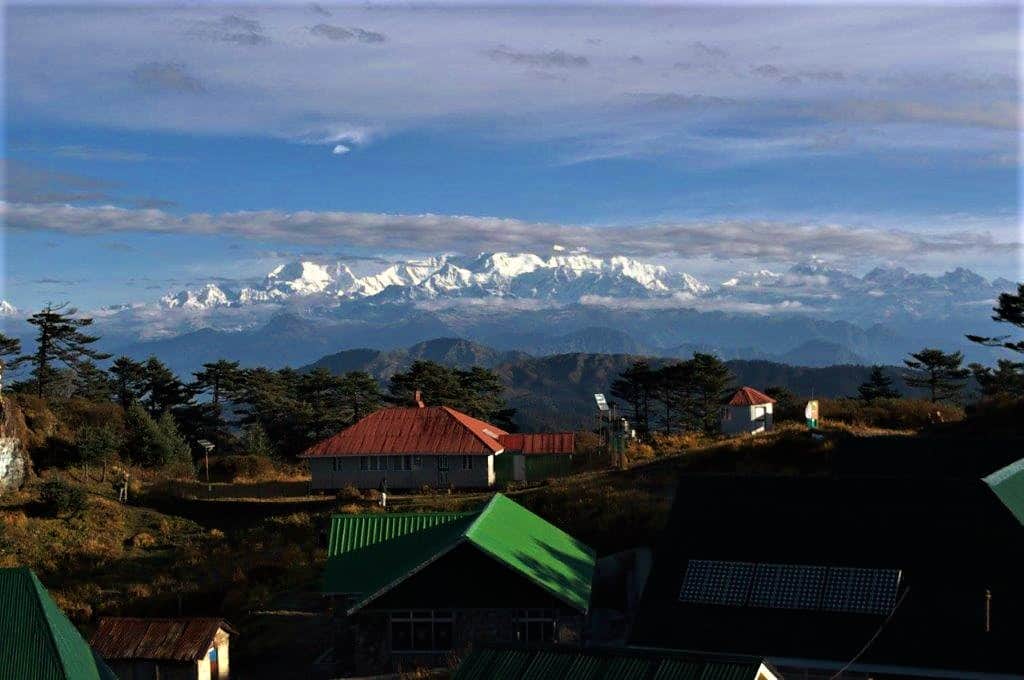
The Route Onward and Downward
Sandakphu – Phalut
The gravel path goes on from Sandakphu till Phalut, which is the second highest peak of the Singalila Ridge at 11810 feet. The distance is 21 kilometers north of Sandakphu. Trekkers cover the distance in about 10-12 hours, mostly over an easier gradient.
There aren’t any settlements en-route except Sabargram, aka, Sabarkum, so it is imperative to carry supplies, especially water for the trek from Sandakphu. The Land Rovers take around 3 hours to reach. Another option to visit Phalut is on a day trip from Sandakphu in the Rovers, on the return of which one can stay back at Sandakphu or descend till Manebhanjan. Unlike Sandakphu which is covered with greenery, Phalut is barren.
The route passes through picturesque vistas and for most of the journey, the Kanchenjunga keeps a watch on you. Some trekkers break for the day at Sabargram, which is 14 KMs from Sandakphu and has a forest hut to stay at, to complete the remaining 7 KMs the next day.
Phalut does not provide the wide-angle view that Sandakphu does, but the Kanchenjunga manifests itself in a more glorious way. The Sleeping Buddha seems closer from here.
It gets exceptionally windy at nights in Phalut, and to make it worse, it does not have as many options to stay, apart from a very basic GTA Trekker’s Hut and few other private ones that have come up not very long ago, which again are quite elementary in facilities offered. If planning for Phalut, ensure you get your stay pre-booked. Because on reaching there if luck runs out and you do not manage to get a shelter for the night, the nearest other place will be quite far.
Some seasoned trekkers and few beginners too, go on further from Phalut, crossing the Singalila Pass and ending the trek at Uttarey, on the Sikkim side, which requires camping over 2-3 days. The famed Mainibas Waterfall occurs enroute.
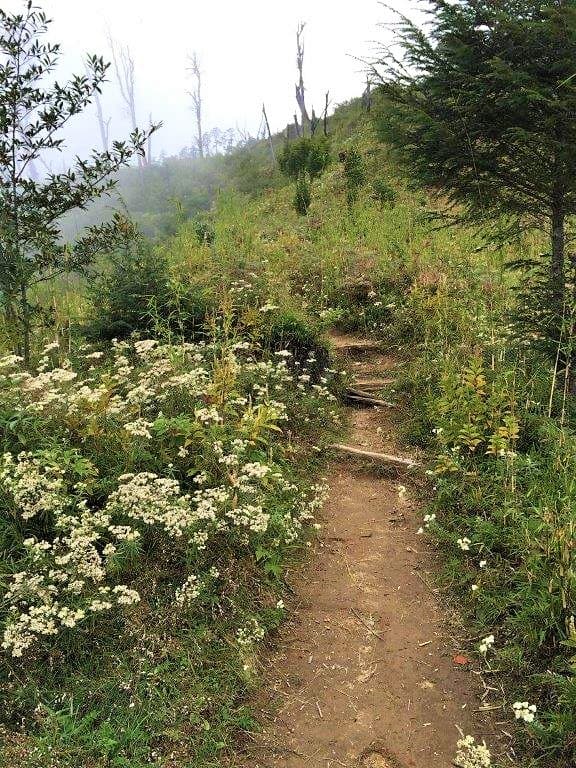
Sandakphu – Srikhola
From Sandakphu, the return has many variations. The obvious one will be retracing the same way that took you up (i.e. Sandakphu-Kalipokhari-Gairibas-Tumling-Manebhanjan). But this one is rarely opted by trekkers coming down. Though if you wish to be driven down from Sandakphu, this will be the only option. Sometimes, people who trek up, return in a vehicle or vice versa (i.e. take a vehicle for the upward journey and trek downhill).
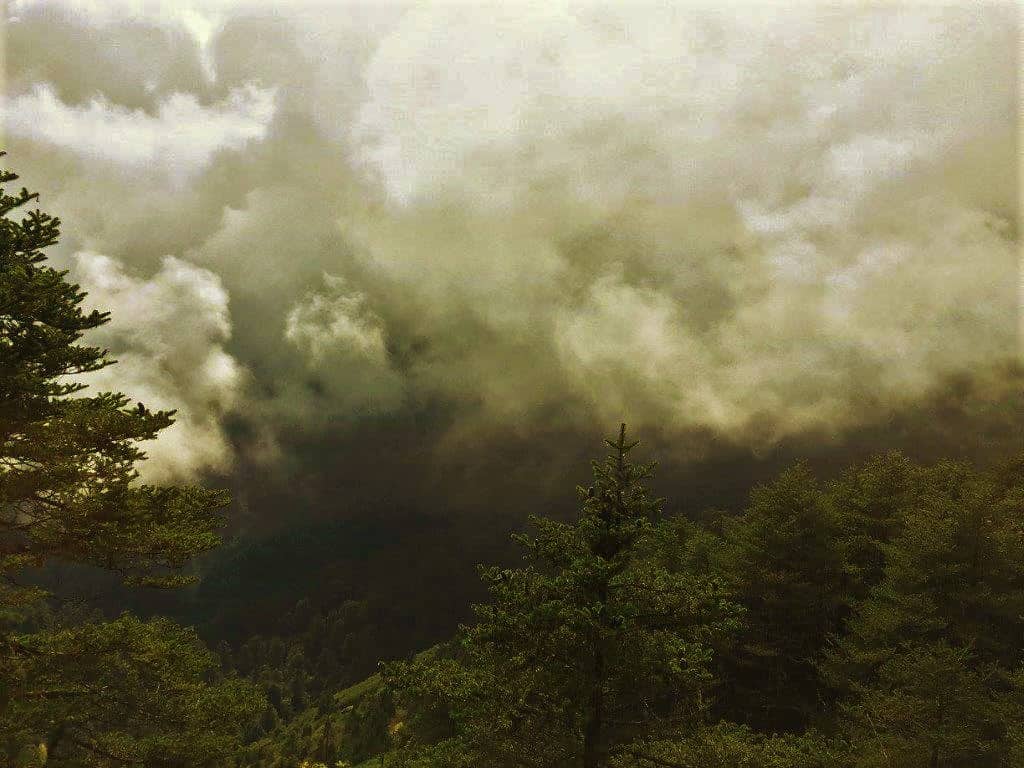
The most opted, shortest and quickest way down would be a 16KM downhill trek from Sandakphu to Srikhola via Gurdum. This enables the option of coming all the way down to a road-head in a single day. Its 10 KMs from Sandakphu to Gurdum and a further 6 KMs to Srikhola, which takes 4-5 hours and 2-3 hours respectively.
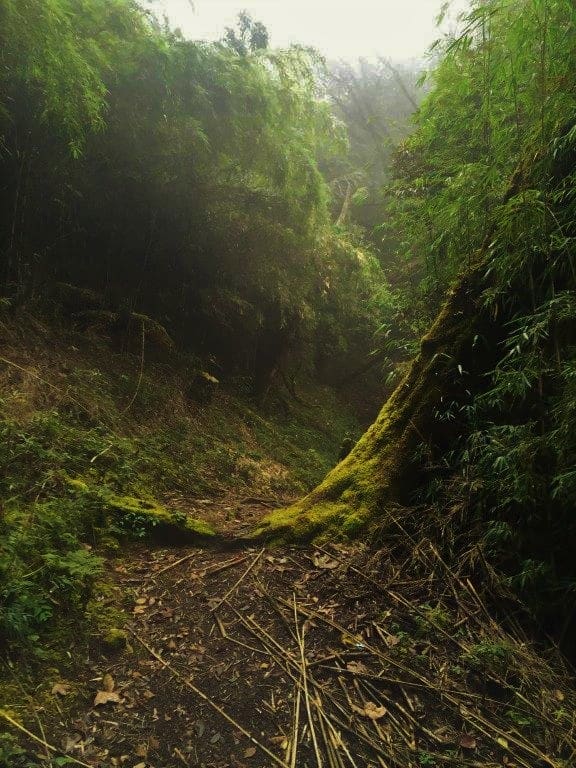
This trail is a pure trekking path through dense forests of the Singalila. Tracing almost entirely downhill, at places quite steeply, through pristine Oaks, Magnolias, Chestnut and Bamboo grooves besides colorful blooms of rhododendrons in the months of April-May, this path is a refreshing relief after the rough boulder tracks up to Sandakphu.
Narrow paths through the dense jungle, passing across meadows and waterfalls over rustic little footbridges, sometimes precariously over moss laden tree roots and fallen trunks, watching over scenic green slopes diving into the valley, it is quite an adventure. If one is lucky, an encounter with a Red Panda or a Himalayan Bear cannot be ruled out.

Gurdum is an outlandishly picturesque little village with 7-8 houses exceptionally squatted on a small flat-land carved on a steep slope. The surroundings are like right out of a postcard. Dense evergreen trees all around, steeply diving valleys encircling a neat little hamlet of tastefully gardened around houses.
An admirable family-run private lodge named ‘Himalayan Sherpa’ provides lodging facilities. It might just be that upon arrival to this place, one might feel inclined to spend a night there attributing just to its remarkable location. Otherwise spend a couple of hours over an early lunch and move on, like it is done commonly. Trekking on this route after dark is better avoided and hence an early start from Sandakphu is suggested.
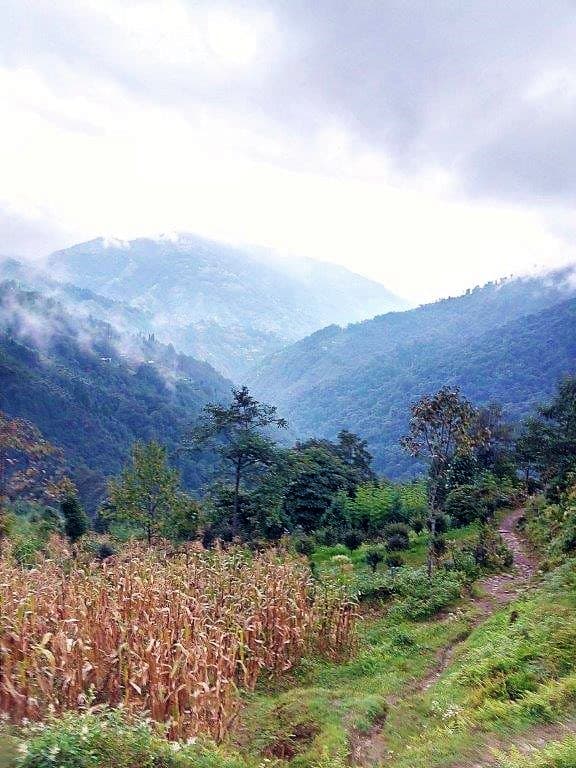
From Gurdum, initially the path descends rapidly till the gushing sounds of the ebulliently flowing Srikhola can be heard below. Then it traces by the river for some distance before crossing it finally through a cemented footbridge over a splendid little bouncing waterfall amidst dense greenery.
Some accommodations have come up near this place (called upper-Srikhola) where the night can be spent or another 1.5-2 KMs of walk will take you to the main Srikhola village. Apart from a GTA trekker’s hut, few other private lodges and a somewhat upmarket riverside resort can play hosts for the night while in Srikhola. Srikhola is another charming little hamlet with a pleasant wooden bridge over the charming ‘khola’ (meaning a small stream). If it is still daylight, the rocky course of the flowing gush has ample spots to spend the descending dusk over some hot chai and shutter ticks.
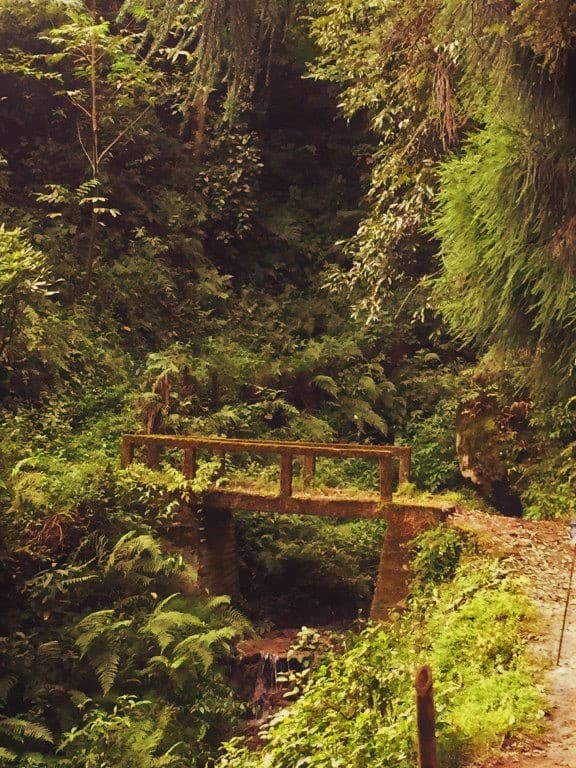

Trekking downhill may not be as exhausting but it takes a toll on the knees and muscles of the lower leg. There may come a time in the course where the lower limbs may become somewhat numb and slightly difficult to have complete control over. A good night’s rest in a warm bed is an essential remedy. Tip: Carry a can of pain relief spray.
A shared jeep leaves Srikhola at 7:30 in the morning for Darjeeling going via Rimbick, Dhotrey, Manebhanjan, and Ghoom. Another leaves at 11:30 for the same destination but through a very less taken and a tad more time-taking route via Bijanbari. If you have the return train/flight on the same day from Siliguri, book your spots on the morning vehicle through the lodge owner the previous night.
A change of vehicle has to be done from Rimbick or Darjeeling for NJP/Siliguri. If the train/flight is sometime near afternoon then booking a full vehicle for an earlier start would become necessary as it will take between 5-6 hours for Srikhola to NJP/Bagdogra.
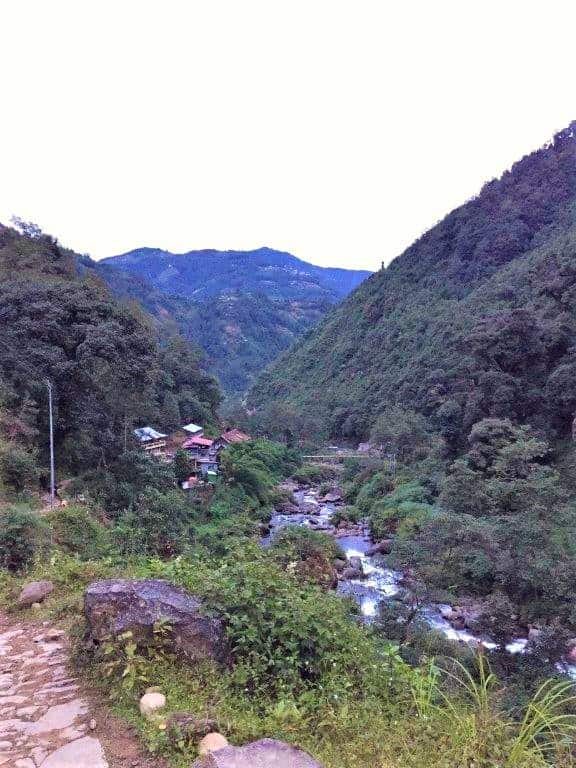
Tentative Itineraries
Sandakphu By Road
Day 1: Arrive at Siliguri/NJP/Bagdogra and hire a car for Manebhanjan via Mirik. From Manebhanjan, hire a local 4WD vehicle from the stand for a drop till Tumling. Preferably, book the vehicle for the entire stay. Night halt charges for the vehicles are extra. Enroute stop briefly at Tonglu for a cup of tea. Overnight at Tumling
Day 2: Start after breakfast from Tumling for Sandakphu. Enroute stop at Gairibas and Kalipokhari to enjoy the places. Overnight at Sandakphu.
Day 3/4: A place like Sandakphu deserves an additional day if possible. If staying back, take a day tour to Phalut and back. If returning too, can go up to Phalut and descend straight for Manebhanjan thereafter, or drive down from Sandakphu itself. From Manebhanjan take another vehicle for Darjeeling or Mirik to change over again for Siliguri, or hire a full vehicle for Siliguri directly.
Sandakphu By Trek / Combination of Trek and Drive
Numerous nationally reputed trek aggregators besides many local ones conduct this trek. They include everything from entry permits, guides & porterage, accommodation, food and transfers to and fro Siliguri. However, a self-arranged trip can be managed with a little effort. One has to pre-book some places as per their itinerary, particularly in the months of rush and reach Manebhanjan from where a guide can be booked instantly.
Day 1: Arrive at Siliguri/NJP/Bagdogra and hire a car for Manebhanjan via Mirik. Hire a guide and porters as per requirements. If wishing to start the trek from Manebhanjan, stay overnight and start early next morning. Alternatively, now that the road has been paved, hire a vehicle for Tonglu/Tumling and start trekking onwards on Day 2. This will save one day and cut down the 13 kilometers of the trek.
Alternatively, Drive on another 17 KMs after crossing Manebhanjan till Dhotrey and stay overnight before commencing the trek from here through the Dhotrey-Tonglu forest trail.
Day 2: If starting from Manebhanjan, trek uphill till Tonglu or Tumling and stay overnight. If commencing the trek from Tumling, trek up to Kalipokhari or Gairibas.
Day 3: Start early from Kalipokhri for Sandakphu. Take it slow especially after Bikeybhanjan. Overnight at Sandakphu.
Day 4: If trekking all the way up from Manebhanjan, you will reach Sandakphu today. If already here, start the trek for Srikhola via Gurdum. Stay overnight at Gurdum if there is an additional day or else in Srikhola.
Day 5: Take one of the two daily service jeeps from Srikhola for Darjeeling. Change either at Rimbick, Manebhanjan or Darjeeling for NJP or alternatively hire a vehicle directly for NJP.
Phalut Trek from Sandakphu and Return
Day 1-4: Same as Sandakphu trek discussed above.
Day 5: Trek the 21 KMs from Sandakphu to Phalut which will take 8-10 hours. Overnight at Phalut
Day 6: Trek Phalut to Gorkhey and stay overnight (One of the most beautiful villages of the Singalila beside a khola). The 15 KMs trek takes 6-7 hours for the average trekker.
Day 7: Trek Gorkhey to Srikhola via Rammam. Overnight at Srikhola.
Day 8: Take one of the two daily service jeeps from Srikhola for Darjeeling. Change either at Rimbick, Manebhanjan or Darjeeling for NJP or alternatively hire a vehicle directly for NJP.
Getting There
The gateway to the Singalila is the small little town of Manebhanjan on the borders of India and Nepal, which is 90 odd kilometers from Siliguri/NJP/Bagdogra.
The route goes via Mirik and Sukhiapokhri and takes about 4 hours to reach in a hired vehicle available widely both at NJP Railway Station and Bagdogra Airport.
Another route to reach Mane is via the Hill Cart road that goes to Darjeeling. For which the road bifurcating left at Ghoom needs to be taken. NJP railhead is connected to all major towns of the country. Bagdogra has direct flights from Kolkata, New Delhi, Guwahati, Bangalore, Chennai ,and Mumbai.
For people on a budget, shared vehicles till Mirik and Sukhiapokhri are available from the SNT stand at Siliguri. Onwards from both these places shared jeeps to Manebhanjan are available but would take comparatively longer to reach in that case.
A drop from Siliguri to Manebhanjan in a vehicle like Bolero/Sumo will be around 3000 INR and 4000 INR for Dhotrey. Srikhola to NJP drop will cost around 5000 INR in an exclusive vehicle.
Shared vehicle for Mirik and Sukhiapokhri are available from outside NJP and Siliguri stand in decent frequency. Shared vehicles for Srikhola, Rimbick and Manebhanjan are also available from Siliguri stand but frequency of these could be as low as one single trip a day.
Location and Altitude
The region of the Singalila Ridge including the Singalila National Park is located partly in West Bengal, India, and Ilam, Nepal. The borders are just nominal with no restrictions for Indian tourists. Even foreigners with an Indian Visa will face no hindrance. The altitudes vary from 7000 to 11,150 feet. Refer to the detailed cartograph of the various places along with their altitudes and intermediate distances.
Best Season to Travel
Apart from the three months between mid-June to mid-September when the Singalila National Park is officially closed owing to Monsoons, a trip to Sandakphu can be done anytime in the remaining time of the year. However, the months of March-May and then October-December are considered the best durations to make a visit.
The spring months are when the Rhododendrons bloom and make the region wear a multitude of colors.
The winters are known for unhindered clear views of the peaks and the autumn bloom of orchids and primulas. The snowing months of Jan-Feb are also getting popular for their unique experience of trekking over snow, but for which proper snow boots and jackets become necessary.
Even in summers, Sandakphu can get chillingly cold and windy particularly at night. Carrying heavy woolens, thermals, hand gloves and head covers are recommended.
Places to Stay and Eat
GTA Trekker’s Huts and Lodges are located at Tonglu, Gairibas, Kalipokhri, Sandakphu, Phalut and Srikhola. They are quite cheap and provide basic facilities with common toilets commonly. A bed in the dormitories cost around 300 INR per night. GTA has offices in Kolkata and Darjeeling from where bookings can be made.
Information centers are available at Kalimpong and Siliguri. GTA also conducts organized treks for Sandakphu and Phalut. Details regarding which can be found at their website. However, online booking facilities are still non-existent.
G.T.A., Darjeeling
Secretariat Office, Lalkoti, Darjeeling.
Email: edtourismgta@yahoo.in
Website: www.tourismdarjeeling.com
/ www.gtatourism.com
Phone: (0354)
2255022
G.T.A., Kolkata
Gorkha Bhavan, Salt Lake (Opposite CityCentre Mall).
Block: DD-28, Sector 1, Salt Lake City, Kolkata – 700064.
Phone: 9903174047, (033) 23377534
Other Private Accommodations & Contacts
As the region is gaining popularity, more so after the vehicular road has been revamped, new homestays and lodges are opening up in the recent past.
Some of the recommended properties to stay alongwith their contact details are enlisted, however since connectivity is erratic in these parts, keep trying the numbers over few days or shoot an SMS for better chances of getting through.
The tariffs of most are generally in the tune of 1000-1500 bucks for a standard double room
- Hotel Sherpa Chalet, Sandakphu (Best in Sandakphu): 8509252318 / 9742621760 / 9933488159
- Pandim Lodge, Kalipokhari: 9333964774 / 9735916541
- Shikhar Lodge, Tumling (Personal favorite): 9564797551 / 91488 24227
- Magnolia Lodge, Gairibas: 91 76021 68750
- Himalayan Sherpa Lodge, Gurdum: 9733361799
- Jiban Chetri’s Exotica Lodge, Manebhanjan: 9733044512. Popularly known as Master ji, can help in arranging everything for the trek and also to book the GTA properties.
- Hotel Shovraj, Srikhola (Upmarket riverside resort): Phone: 09933488243
- Goparma Lodge, Srikhola: 9818827720
- Sherpa Lodge, Dhotrey: 9476386379
- Nagen is a local registered and trained guide from Manebhanjan: 8906202755. He can also arrange for every requirement.
- Highlander Guides and Porters Welfare Association, Manebhanjan:
9734056944 / 9933369449 / 9476151523
There are no so-called restaurants in the entire route apart from maybe some non-descript eateries in Manebhanjan. All throughout the route small tea shacks cater to the travelers with basic items like Omelettes, Maggi, tea etc. Sometimes they also have dal-chawal.
The places one would stay provide basic meals at additional cost. The cost of food rises with altitude, Sandakphu being the most expensive where a basic thali would cost around 200 INR.
Permits and Guides
An entry permit for Singalila is mandatory like any other national park in India. The cost per person is 100 INR for Indian citizens and 200 INR for foreign nationals. Additionally camera fee of 100 INR for still digital cameras and 400 INR for videocams. The entry permits can be obtained either at Manebhanjan or at the entry gate of the park shortly after Tumling. Visiting Tonglu, Tumling, and Srikhola independently would not require any permits.
Taking one guide per group is mandatory and can be hired from the Highlander Guides and Porters welfare association outlet at Manebhanjan. They are also available from Dhotrey and Srikhola (In case of a seldom attempted reverse trek). Charges are 700 INR per guide per day, and 600 INR per porter per day, which also includes their stay and food for the entire stretch except for while in Sandakphu where the food expenses need to be borne by the appointees.
Nearby Utilities
There are no ATMs in the route, even none at Manebhanjan. The closest is a sole SBI ATM at Sukhiapokhri. Mirik has 3-4 ATMs besides many at Siliguri. Carry all your required cash from these places.
Manebhanjan has a health center and the nearest hospital is in Darjeeling. Same goes for Police Stations with Manebhanjan having an outpost. Being on the borders there are several SSB camps and checkposts en-route.
Vodafone, Airtel, and BSNL work in certain areas but the network strength is undependable apart from Manebhanjan and Srikhola where a proper network is available. Many locals use Nepali connections which supposedly work better. For better connectivity, enabling international roaming for Nepal can help but the charges are steep.
After Tumling, there isn’t even electricity, though the lodges have installed solar panels for minimal lighting purposes and charge their guest’s phones and cameras at a marginal extra cost ranging from 10-50 INR per device. Candles are provided by the hosts which add to a primordial experience of being unconnected and immersed in the rawness of the place.
Conclusion
Singalila presents a unique opportunity for travelers to get a reticent feel of a sub-alpine National Park situated on a Himalayan ridge. It has something for everyone. Be it photography, bird-watching, trekking, wildlife spotting or just leisure traveling the serene placid slopes and valleys of the eastern Himalayan mountains.
The cherry on the top, a view which is unparalleled and shall remain engraved in the memories of the beholder. Sandakphu made me realize, that if mountains are to be observed, it cannot be done just by traveling on metalled roads in a car on a point to point sightseeing basis. They have to be walked upon and hiked. Only then their true treasures unfold.
The seclusion, calm, nothingness, the enchanting glimpses, the pure breeze, the bright sunlight, the opera of the glistening white clouds, the tranquil greenery, the mountain climate, and the whole affair with the place would illuminate a portion of your soul, maybe forever or till you come back.


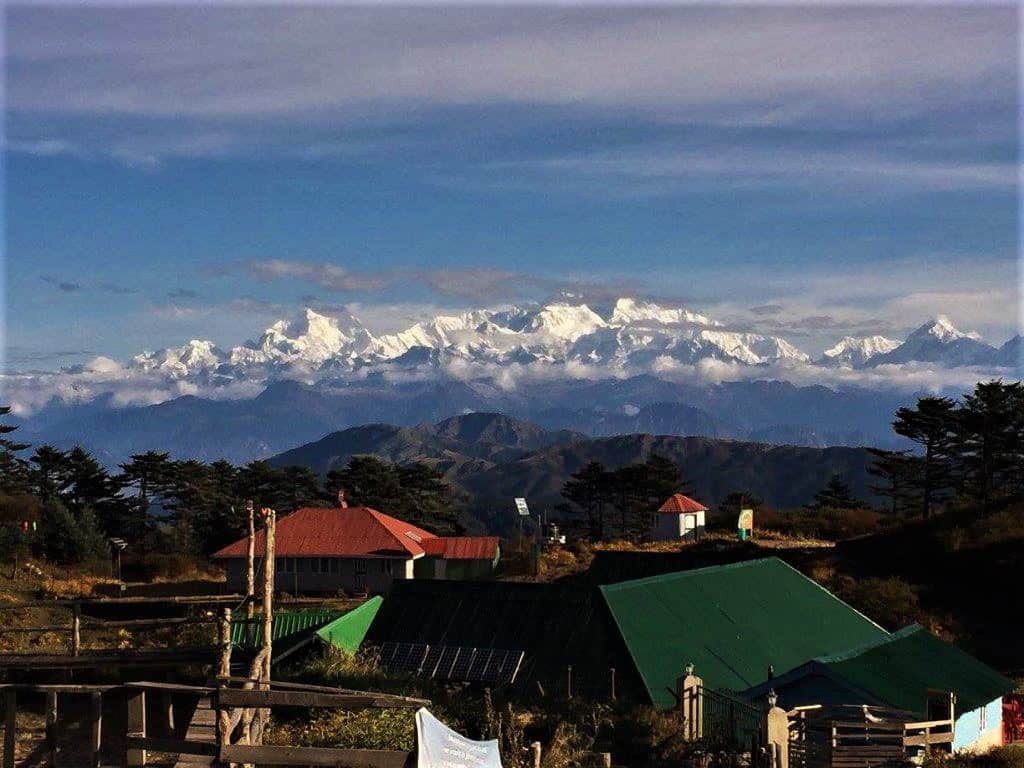




8 Comments
Comments section gets closed in 90 days. To ask your travel questions, you can follow my YouTube Channel for a faster reply or for a much slower reply follow me on Instagram. :)
Is there any other accommodation (private) other than GTA trekkers hut in tonglu? Can you please provide the names and phone numbers?
Thank you for sharing the experience… Just wanted to know if travelling with kids is worthwhile to Sandakphu may be in a jeep and can the reservation be made before handed to the place?
Hi Sunrit,
Great article! I have been searching for information on Sandakphu hike for a month now and your article by far covers it the best. Very well written. I am visiting Darjeeling in May 2019 with family and I am trying to see if I could fit a Sandakphu hike in my itinerary. I have been hiking and backpacking for a while now and I believe I can get to Sandakphu from Mane in 2 days. What I can’t figure out is the fastest way to get to Bagdogra Aiport from Sandakphu. Here’s the itinerary which I am thinking about:
Day 1: Mane to Gairibas
Overnight stay at Gairibas
Day 2: Gairibas to Sandakphu
Overnight stay at Sandakphu
Day 3: Sandakphu to Bagdogra by around 10 am.
I want to book the 12:20pm flight from Bagdogra to Mumbai on Day 3 but I am not sure if I can make it on time. When I google it, the map shows me a route from Sandakphu to Bagdogra via Nayabazar – Jaubari road which bypasses Mane and gets to the airport in 3h 10 min.
Here are my questions to you and I would really appreciate your feedback:
– Can I reserve a Jeep/SUV which will take me from Sankaphu to Bagdogra airport?
– Does the route which I mentioned above exists?
– If not, what do you think is the fastest route to Bagdogra airport from Sandakphu.
– Is there an alternate itinerary you can suggest which can get me to Bagdogra airport in time for the 12:20 pm flight on Day 3 [which also involves some hiking and not just driving in the SUV :)]?
This is Quite a long post and You shared your travel experience, I always Think East Part of India, But Never got any chance, I always wonder only Goa is the best holiday destination but when I came across your article, what I was really missing. Thank you for sharing, Now I need to add Sandakphu in my bucket list
wow…amazing thank you so much. loved with these photos
Thank you for pointing out. Indeed many people have rode their bikes till Sandakphu. I’ll edit he article.
Sunrit, In the latest rules someone posted in DwD Community group, now bikes are banned and only Land Rovers are allowed. Even private vehicles are no longer allowed.
Two options are mentioned in article …trek and 4×4…. But many have ridden there on bike also….So two wheeler is third option also.
https://discoverwithdheeraj.com/forums/topic/s-3-sandakphu-sikkim-sohra-on-bike/page/6/#post-52798